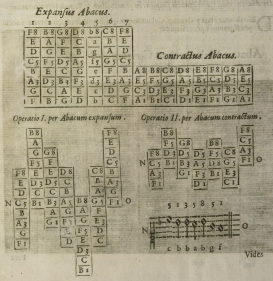The act of composing a musical piece has been linked to notions of inspiration, self-expression, and ingenuity since at least the Romantic period. In contrast, the twentieth century witnessed a wave of digital, algorithmic approaches to music production. For some decades, mathematics apparently succeeded in replacing intuition and, indeed, the human subject as the central part of the creative process. But how did the idea of the possibility of algorithmically produced music emerge in the first place? How is it connected to the formalizability of musical language? What role does the algorithmic creation of pseudorandom, emergent patterns play in view of the importance of predictability and redundancy to the cognitive process?
The history of algorithmic composition has been tentatively dealt with from different points of view, creating a solid factual base for my work. However, the specific questions I pose have not yet been answered. What is still pending is a stronger focus on the interdependency between the histories of pseudorandomness as a scientific tool and algorithmic music. How did pseudorandomness, first employed on a large scale during the Manhattan Project as the “Monte Carlo” method, become a compositional device? Which developments in the history of science preceded and enabled this short-circuiting of mathematics and aesthetics? And, tracing those developments further back in history, how is algorithmic reasoning in the sciences related to the early applications of combinatorics and randomness in music, such as Athanasius Kircher’s Musurgia Universalis (1650), the Musikalisches Würfelspiel (1792), or the Quadrille Melodist (1865)? Focusing on the use of pseudorandomness in composition, this project aims to enrich our understanding of the connections between mathematical complexity, perception, aesthetics, and the history of science.

